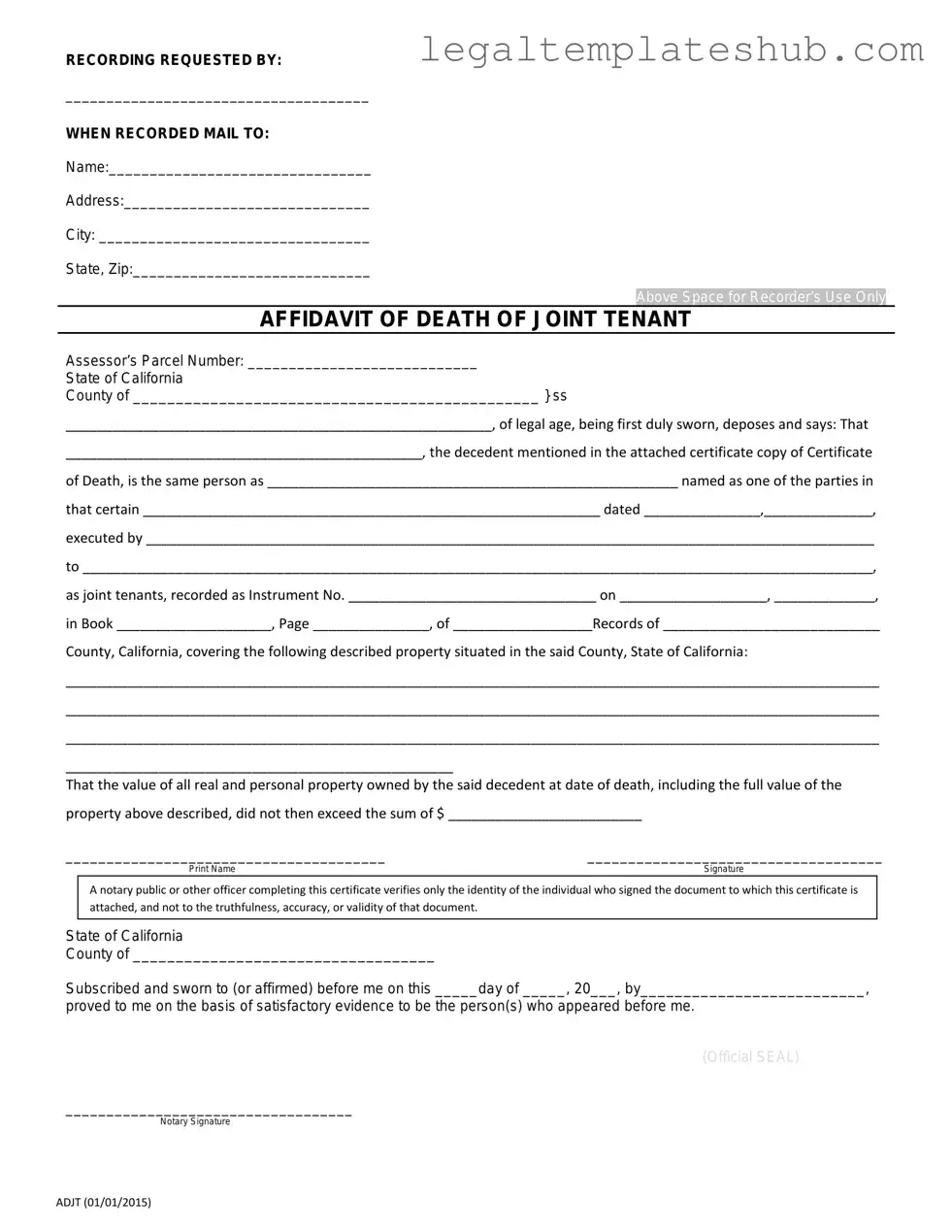Blank California Death of a Joint Tenant Affidavit PDF Form
The California Death of a Joint Tenant Affidavit is a legal document used to confirm the death of a joint tenant and facilitate the transfer of property ownership to the surviving tenant. This form is essential for ensuring that the property title is updated correctly and that the rights of the surviving tenant are protected. Understanding how to complete this affidavit is crucial for those navigating the complexities of joint tenancy.
Ready to fill out the form? Click the button below.
Access Editor
